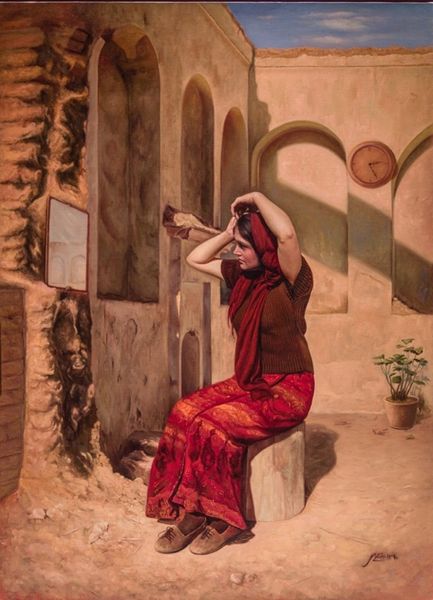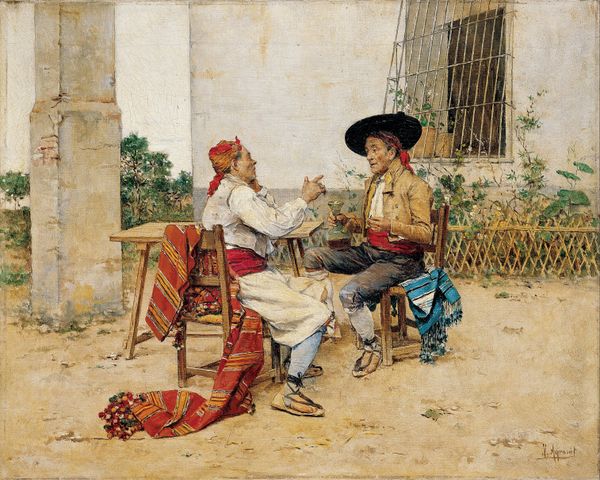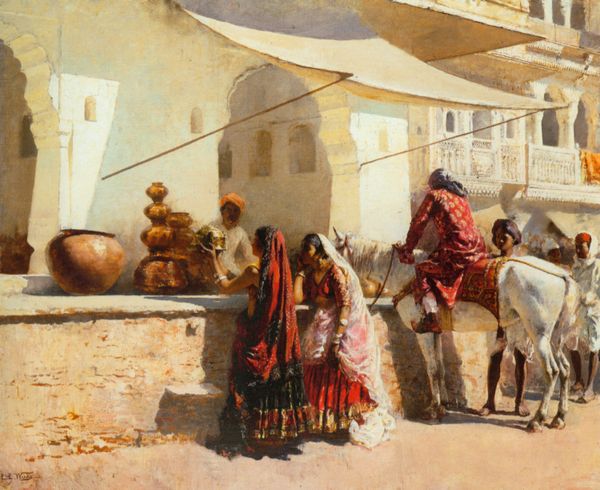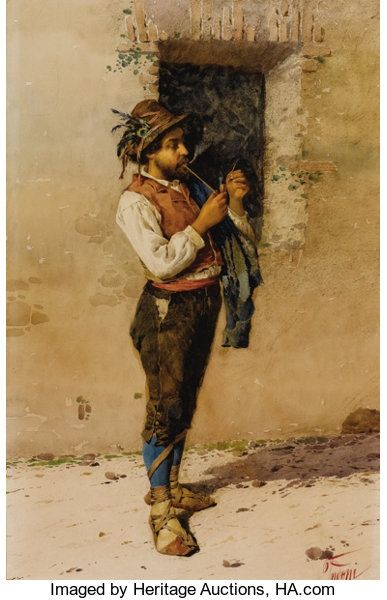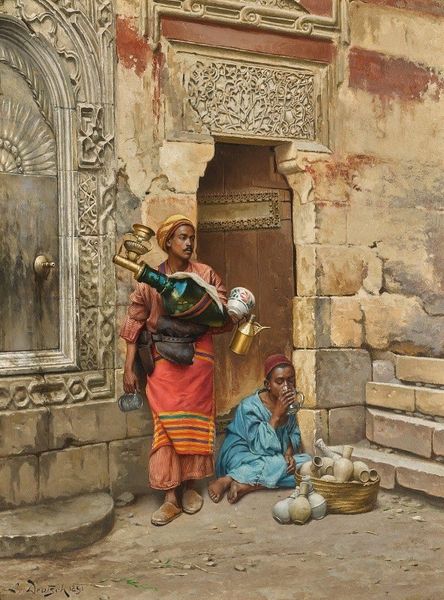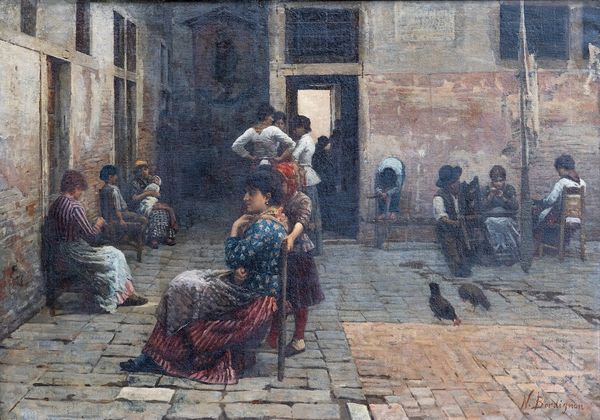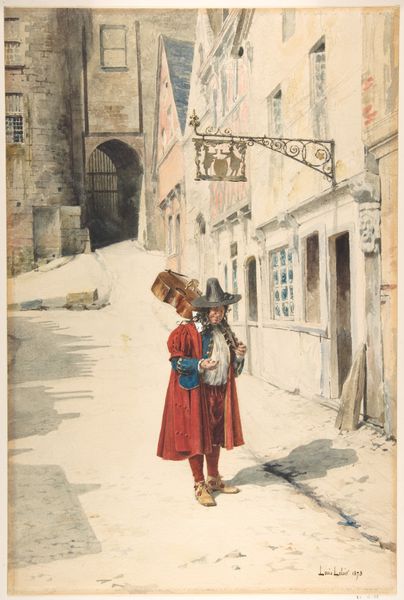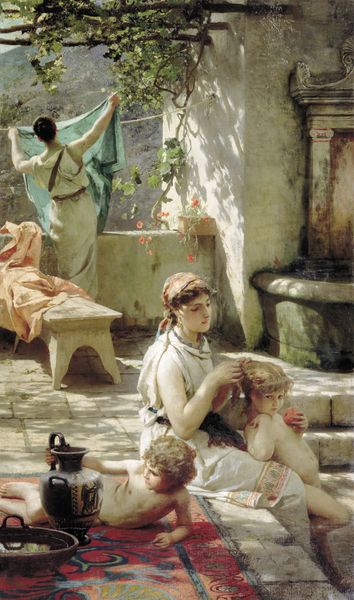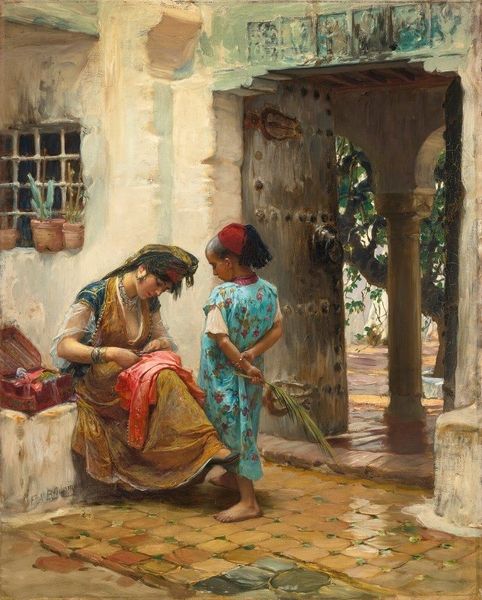
painting, watercolor
#
portrait
#
painting
#
figuration
#
watercolor
#
romanticism
#
costume
#
genre-painting
#
realism
Dimensions: 43.8 x 33 cm
Copyright: Public domain
Editor: Here we have Camille Corot's "Seated Peasant Woman", likely created sometime in the mid-19th century, rendered in watercolor. There's something serene about her pose, almost meditative. I am curious about her costume, and why Corot painted a woman spinning thread in the doorway like this. What can you tell me about this work? Curator: Focusing on the materials and social context opens some interesting avenues. Look at the materiality of her labor: the raw wool in her hands, the spindle, even the coarse texture of her clothes compared to, say, silk in a society portrait. Her clothing also signifies a certain level of making; there's an interesting juxtaposition of raw material and final garment. Editor: So you're saying her spinning wheel tells us more about the cultural value of the craft she performs, but doesn’t quite give her an identity, as we don’t know her name? Curator: Exactly. In fact, the romanticism apparent in this image may even give us insight into the material lives of laborers in that period of industrial growth. Do you think, then, Corot valorizes it, or perhaps romanticizes the economic circumstances of labor? Editor: Hmm. Seeing the context of the work displayed alongside what’s made really connects art to consumption differently, right? Curator: Precisely. Instead of merely aesthetics, it foregrounds the conditions of making and the value we ascribe, or don't ascribe, to these kinds of manual crafts. Editor: I never really looked at "Seated Peasant Woman" this way! Thank you. Curator: My pleasure; reflecting on these kinds of things helps give a much wider significance to how the piece might be studied.
Comments
No comments
Be the first to comment and join the conversation on the ultimate creative platform.

